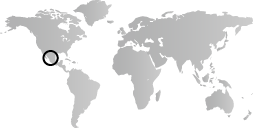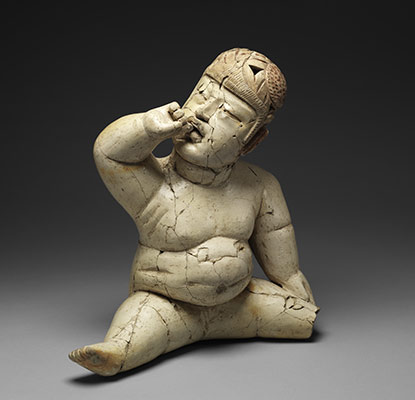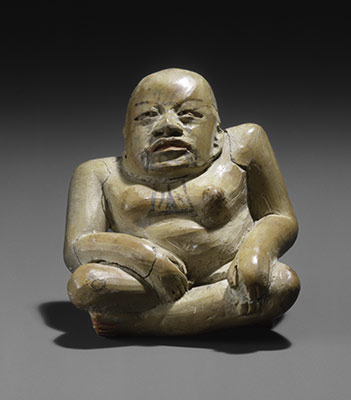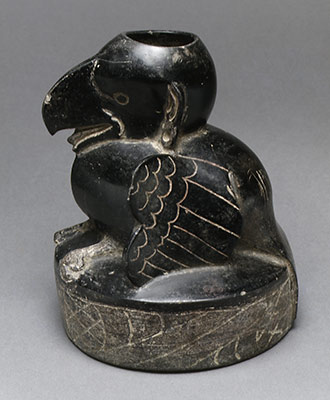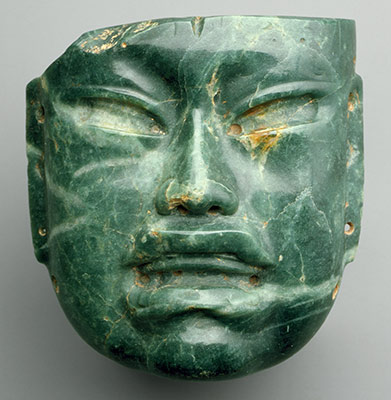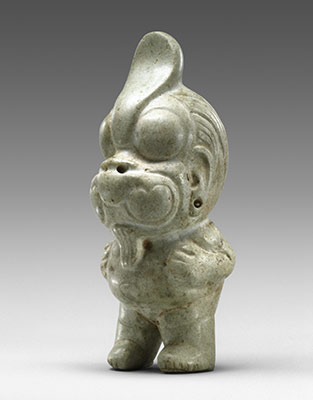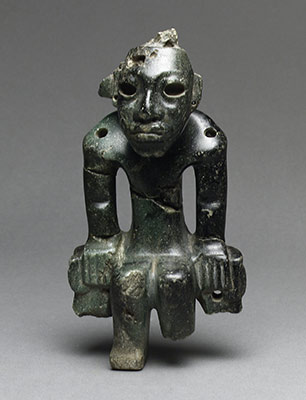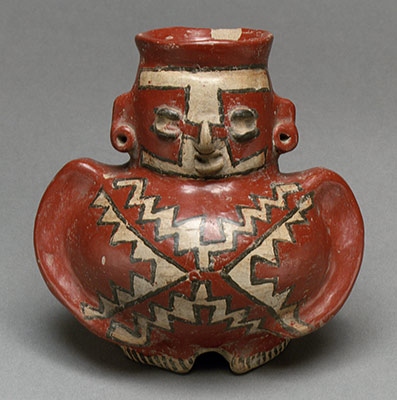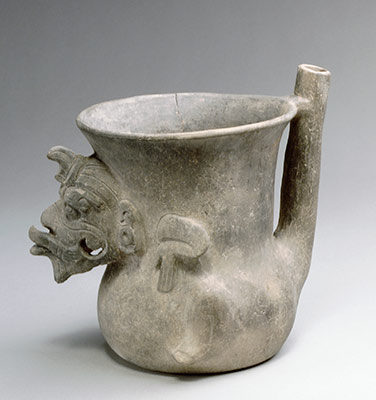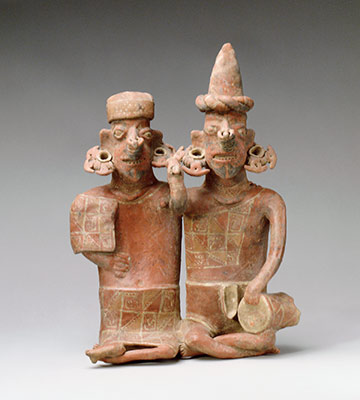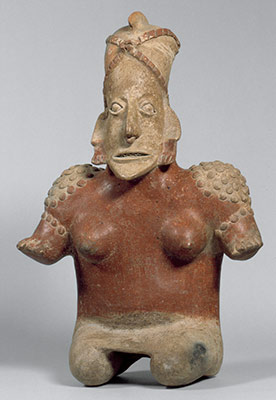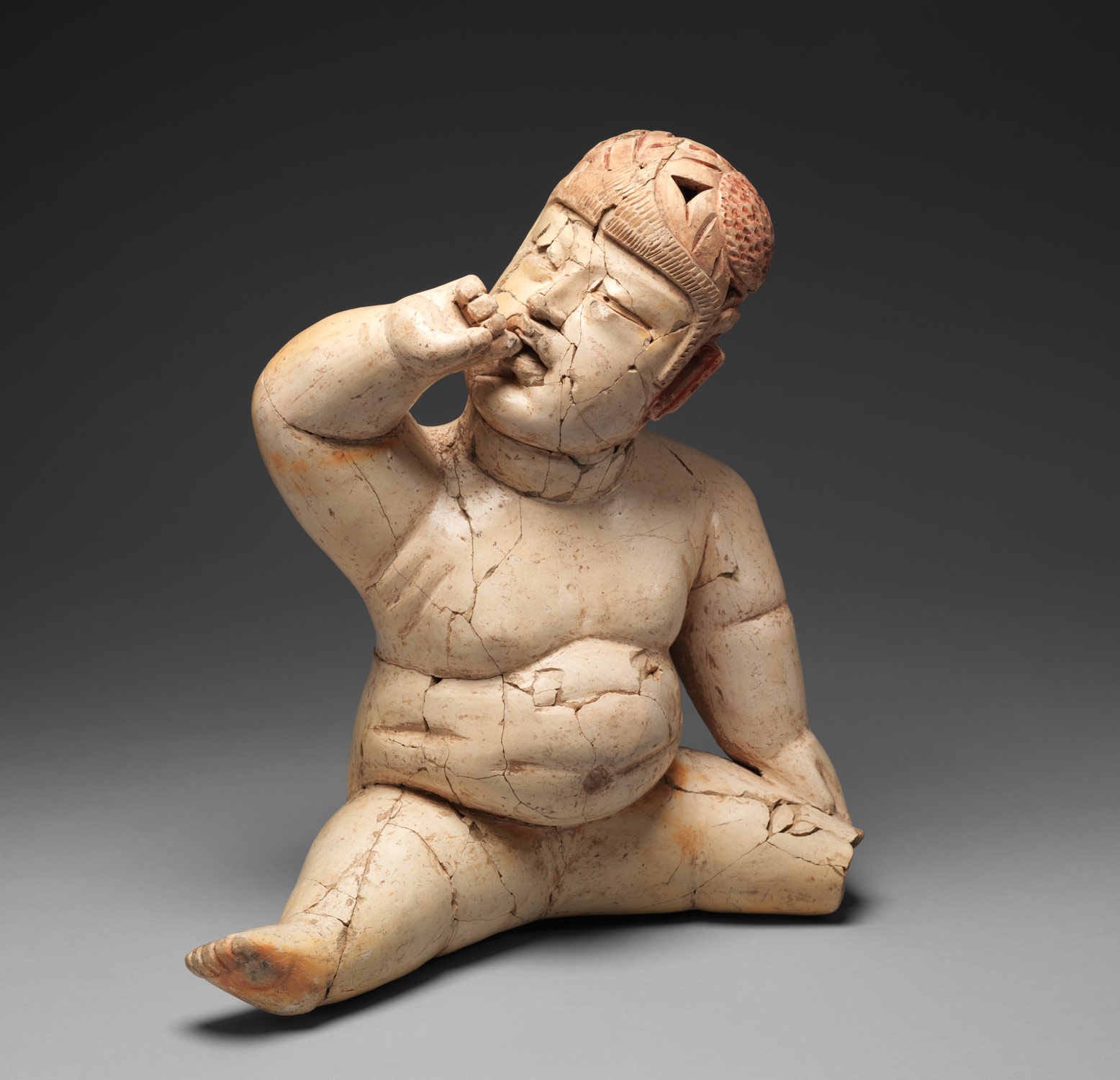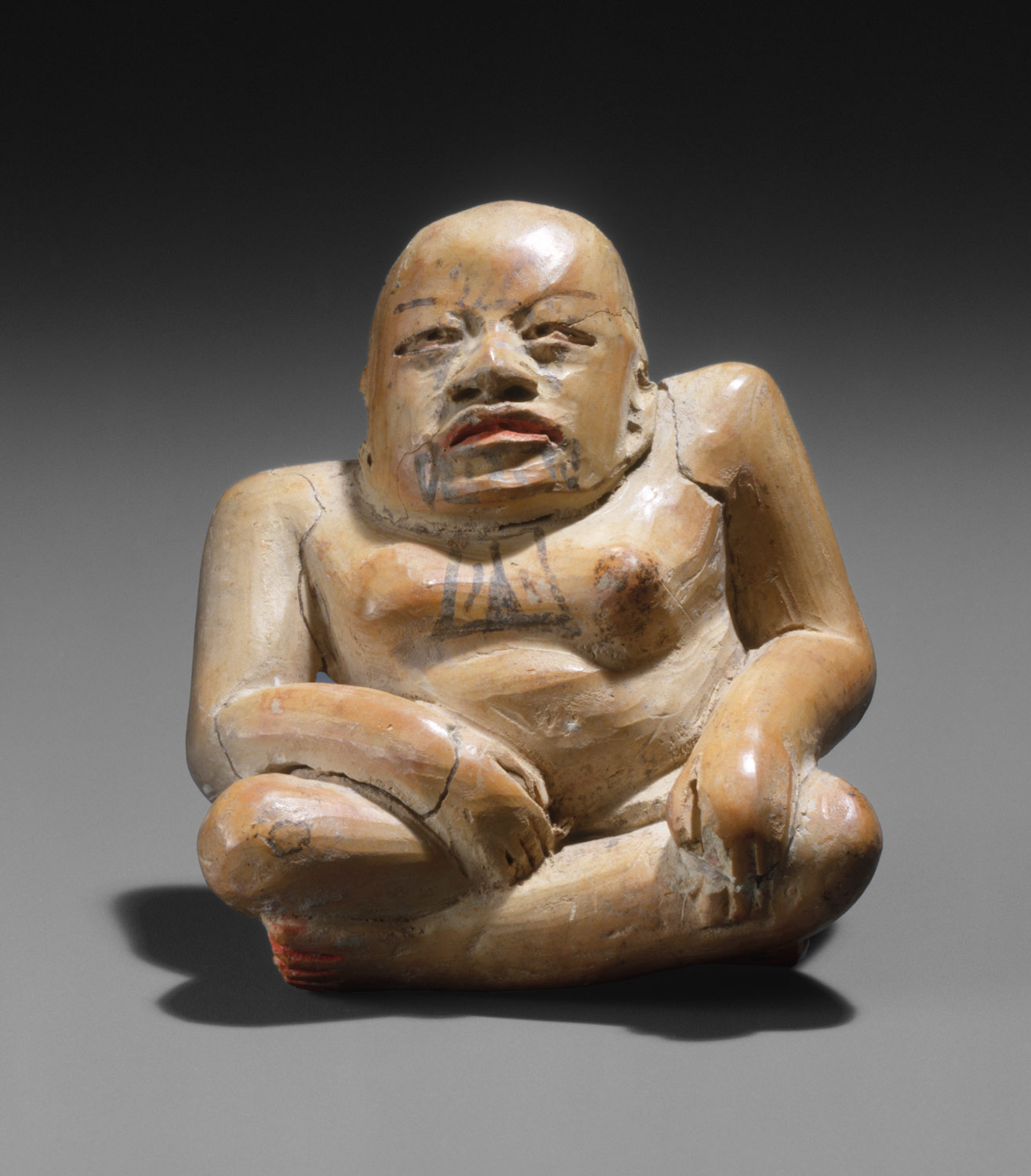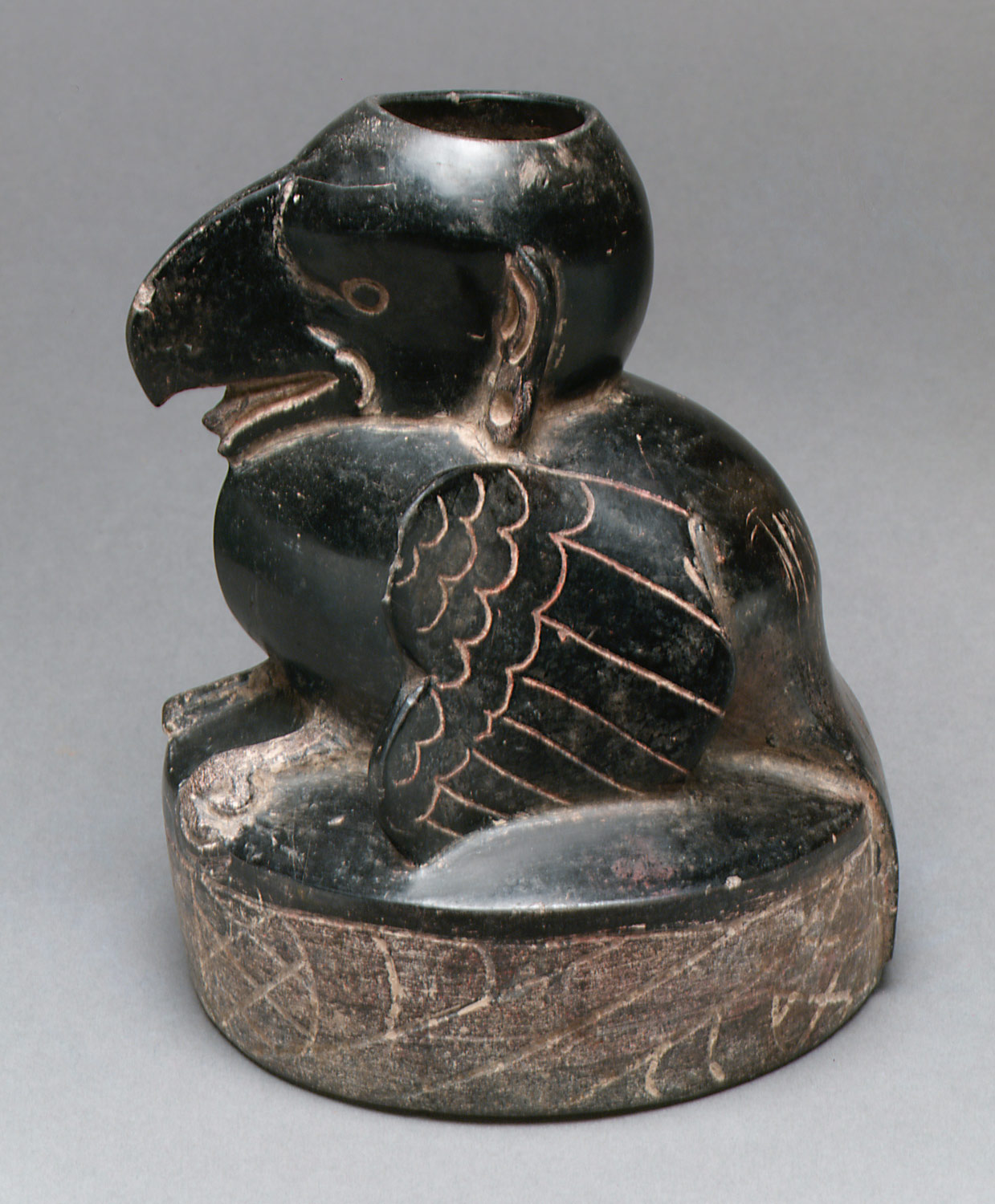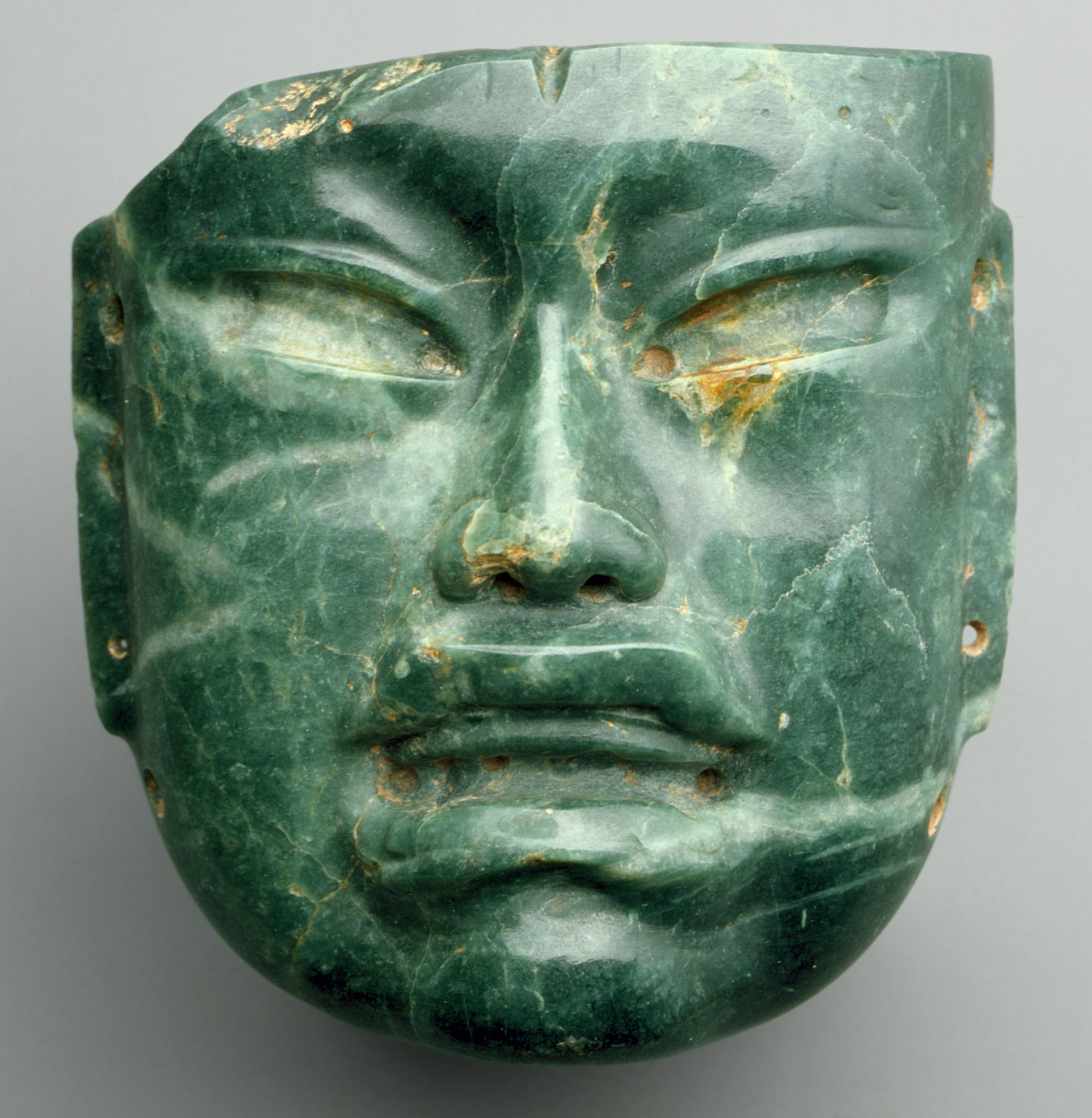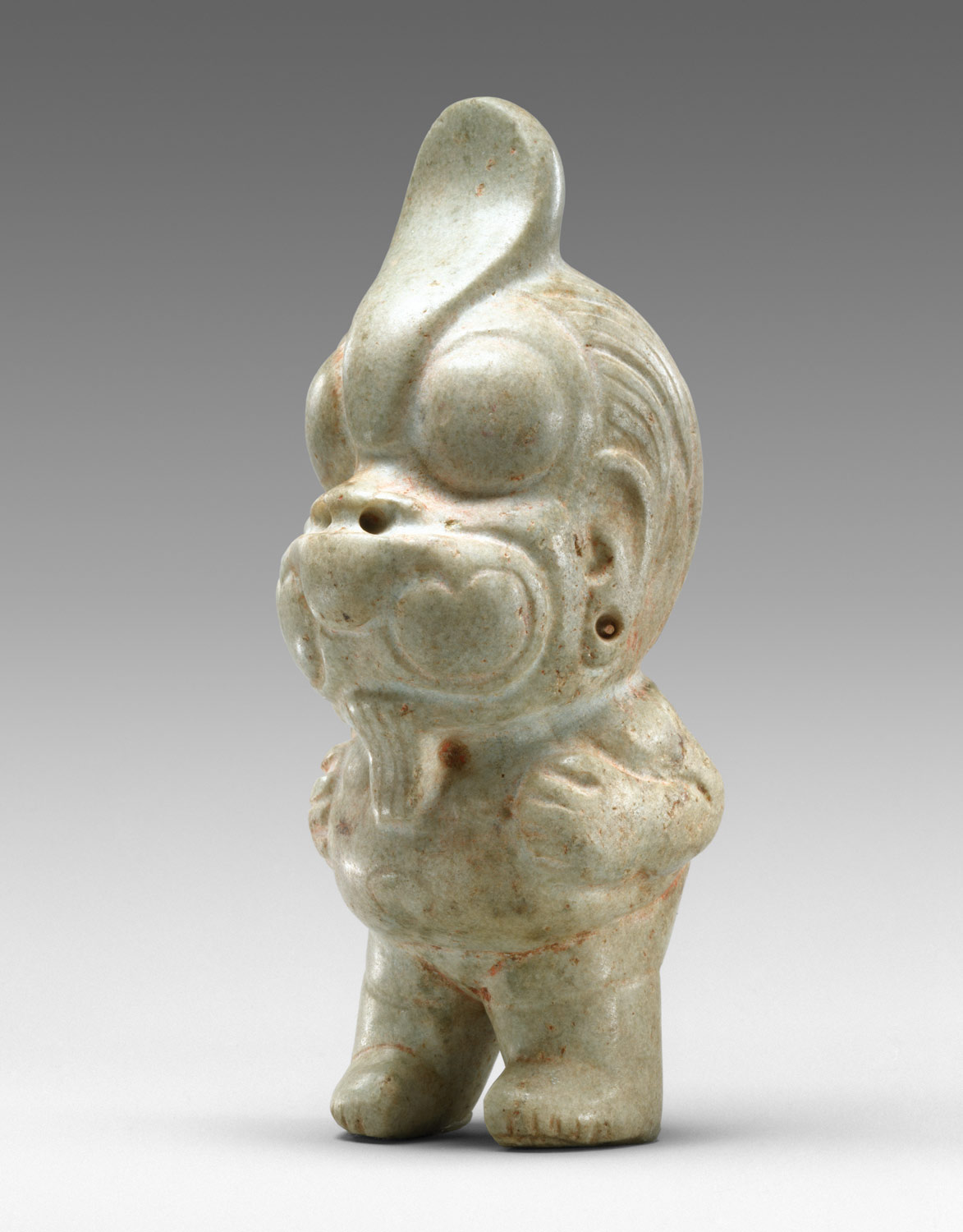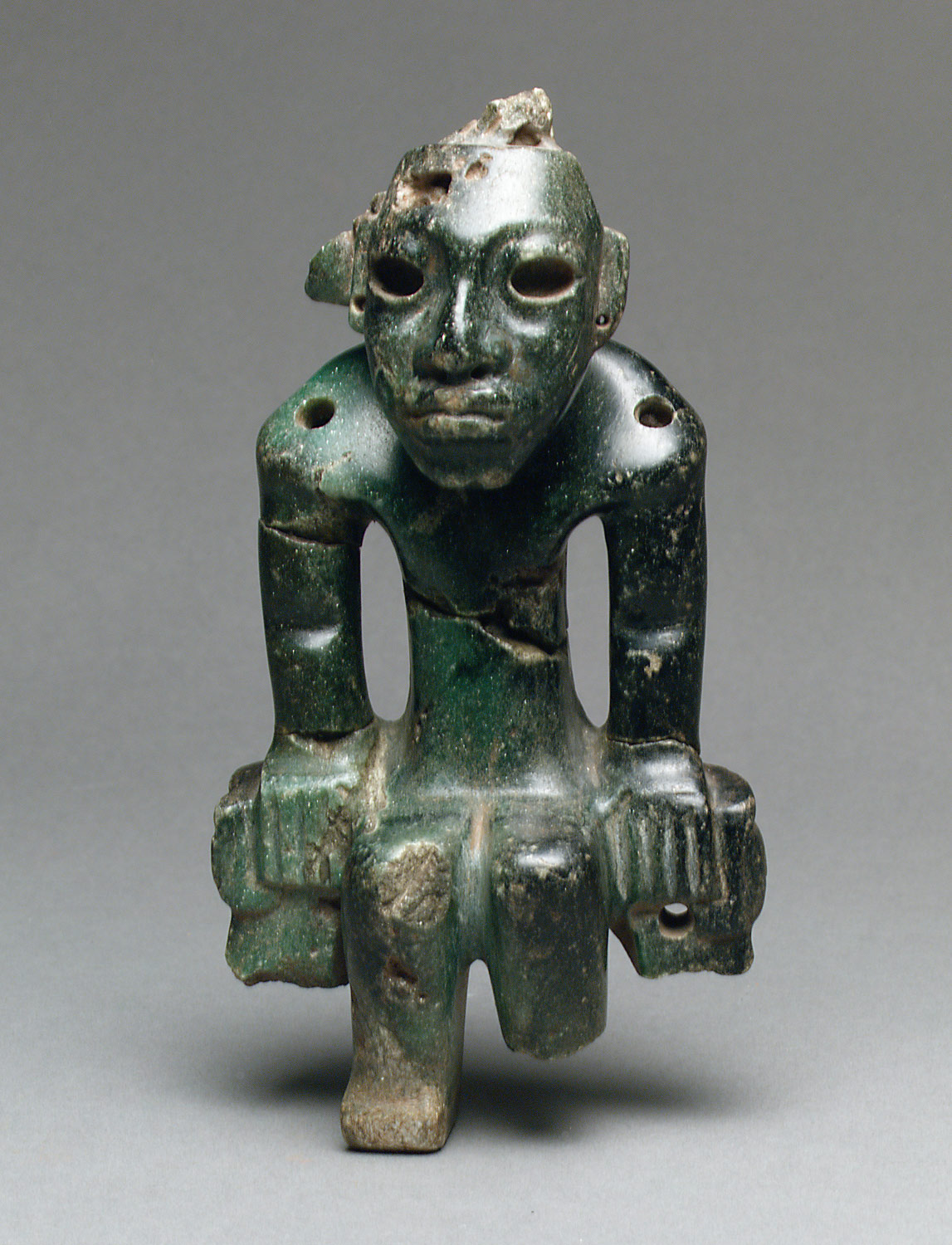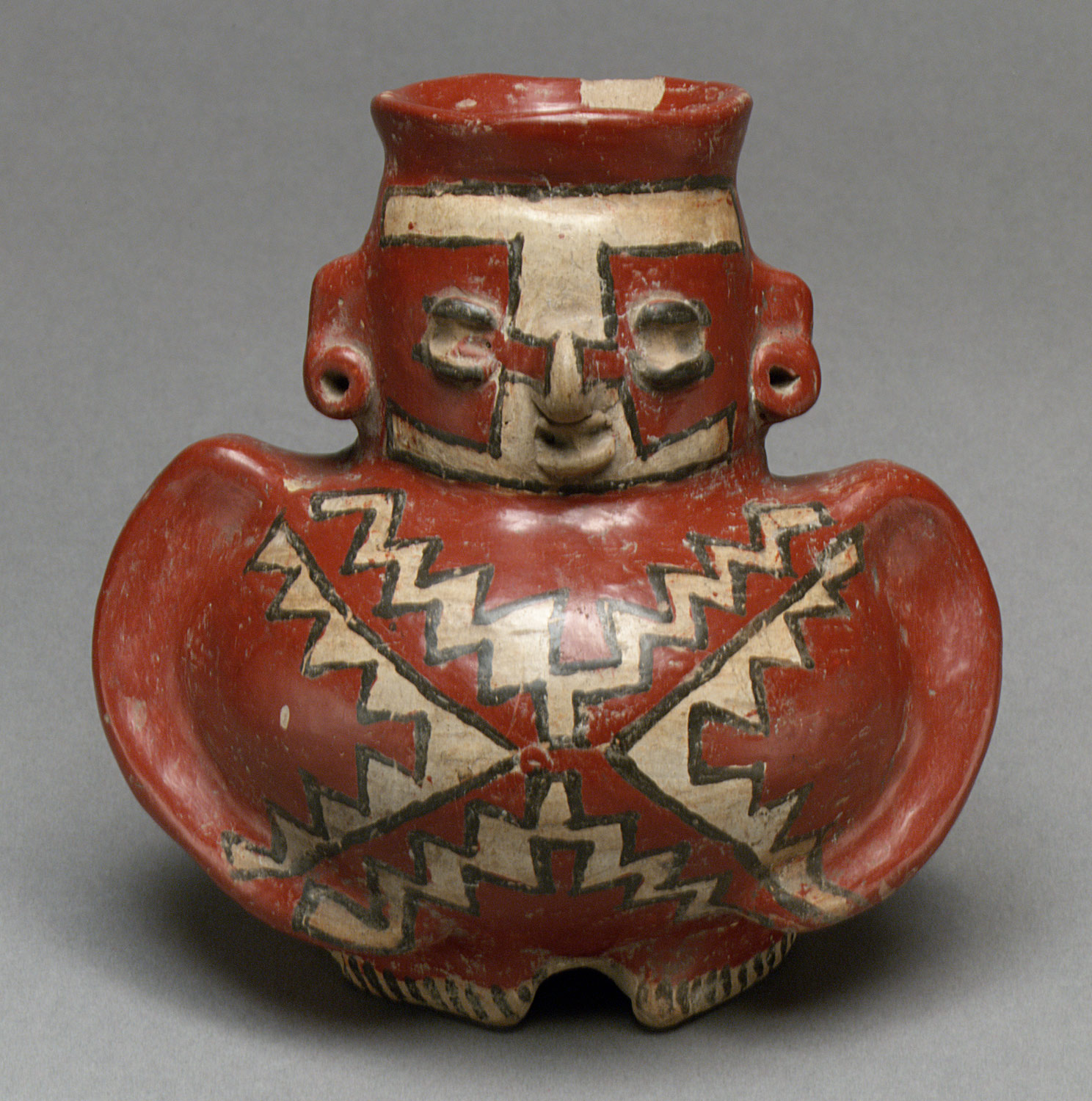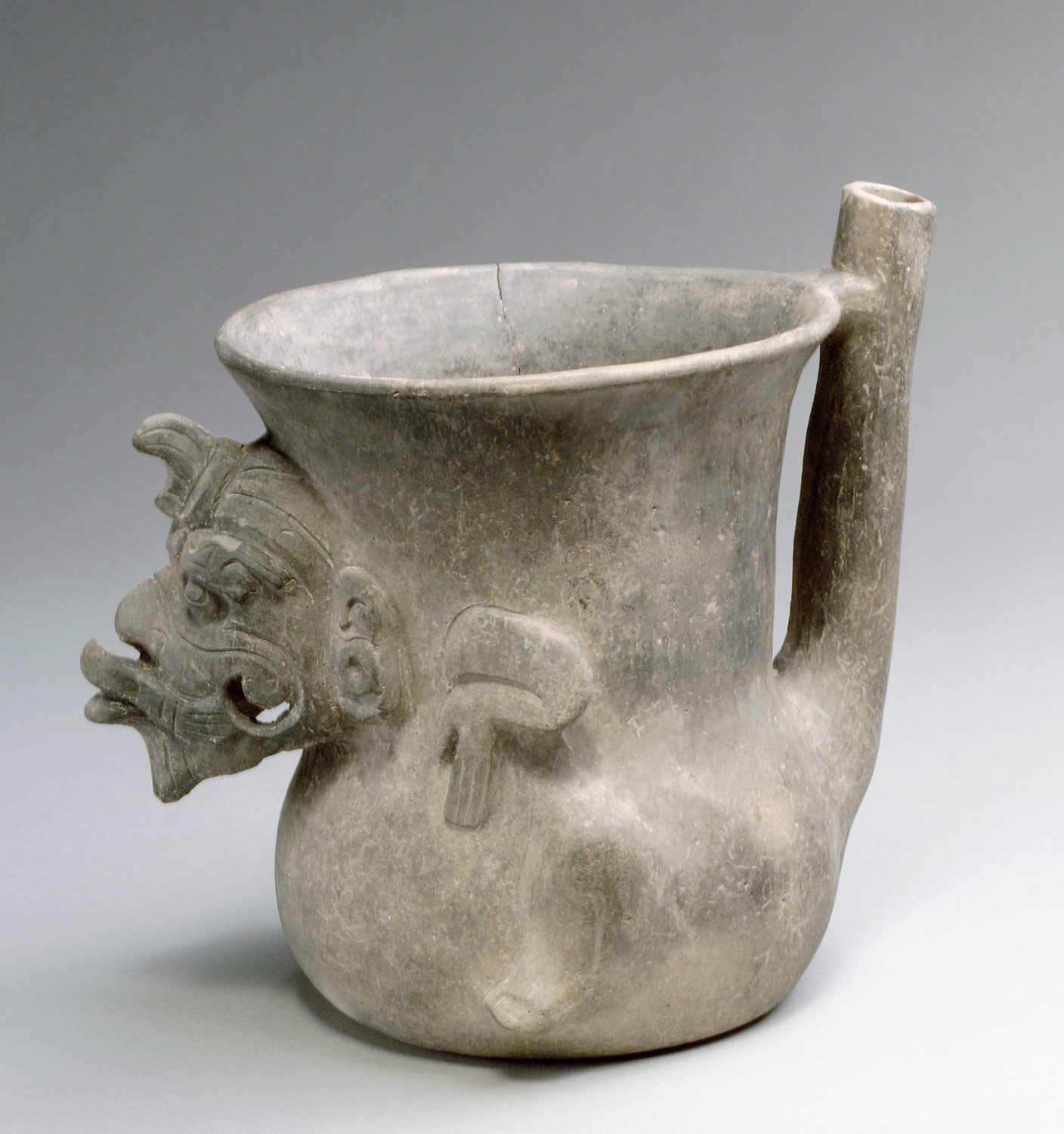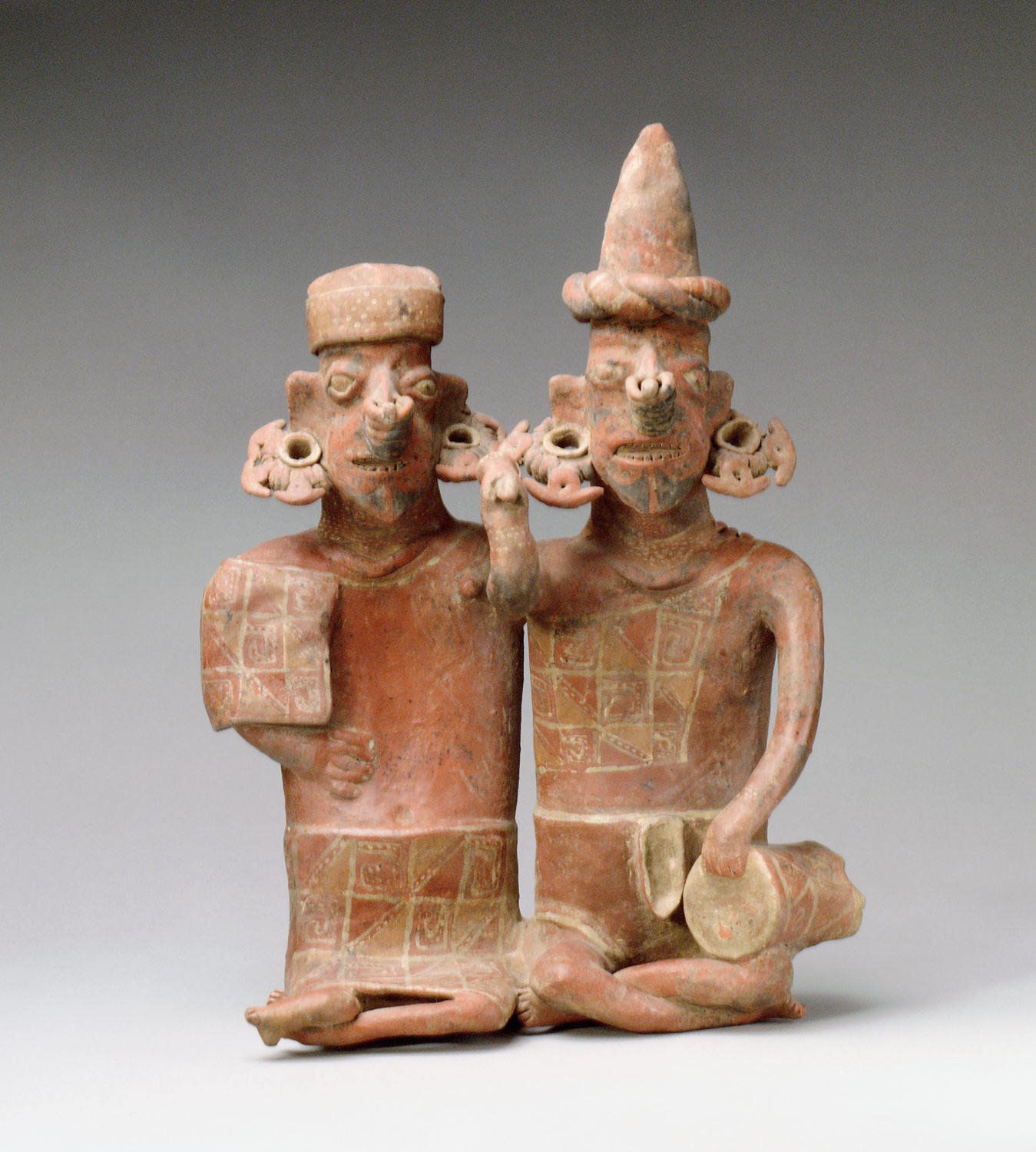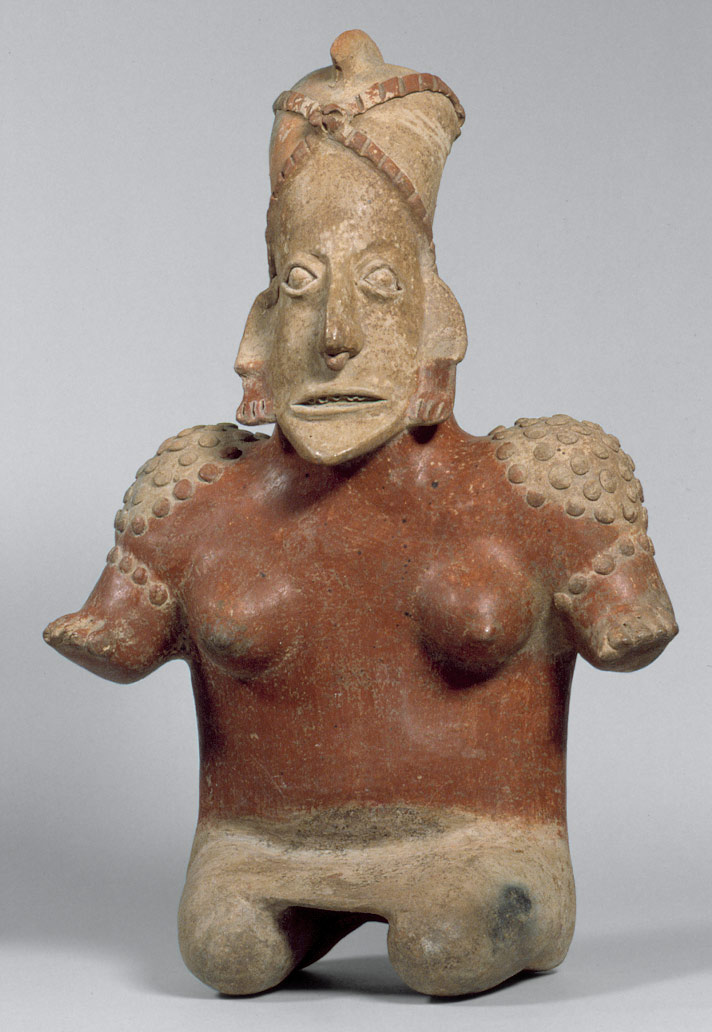Fundamental cultural patterns—maize agriculture, precisely aligned site plans, the construction of pyramids and plazas, and images defining the ruler as the central figure connecting the natural and supernatural realms—spread across the region. Gulf Coast and central Mexican sites carry the Olmec tradition. By 400 B.C., the artistic and cultural dominance of the Gulf Coast wanes. In Oaxaca, the earliest known calendrical glyph occurs around 600 B.C. at the Zapotec site of San José Mogote. The influential site of Teotihuacan in central Mexico is established ca. 150 B.C.
Mexico, 1000 B.C.–1 A.D.
Timeline
1000 B.C.
750 B.C.
CENTRAL MEXICO
GULF COAST
WESTERN MEXICO
SOUTHERN MEXICO
750 B.C.
500 B.C.
CENTRAL MEXICO
GULF COAST
WESTERN MEXICO
SOUTHERN MEXICO
500 B.C.
250 B.C.
CENTRAL MEXICO
GULF COAST
WESTERN MEXICO
SOUTHERN MEXICO
250 B.C.
1 A.D.
CENTRAL MEXICO
GULF COAST
WESTERN MEXICO
SOUTHERN MEXICO
Overview
Key Events
-
ca. 950 B.C.
Olmec San Lorenzo loses political power and population. Sixty miles to the southeast, another Olmec center on the floodplain, the island site of La Venta, gains both.
-
ca. 900 B.C.
The people of Chalcatzingo, in the central Mexican highlands, remodel the natural landscape into a series of broad terraces, and carves ritual scene in low relief on living rock. At other central highland centers such as Tlatilco and Las Bocas, ceramic vessels and figures in Olmec style are present. Trade networks between important regional centers are considered to be active. They are thought to occasion numerous pan-Mesoamerican cultural similarities.
-
ca. 900 B.C.
The layout of the ceremonial heart of La Venta, a specially oriented pattern of juxtaposed mounds and open plazas, is established. Such layouts will be used—with regional and temporal variations—in building sacred Mesoamerican centers for more than 2,000 years.
-
ca. 800 B.C.
A large earthen pyramid is constructed at La Venta, possibly conceived of as a sacred mountain. Burials at La Venta contain significant grave goods. Small carefully fashioned figures, personal ornaments, and celts of green jadeite and other greenstones are among the mortuary offerings.
-
ca. 600 B.C.
Major buildings at San José Mogote in the Valley of Oaxaca are built of masonry. A carved relief is set in a corridor floor that depicts a slain figure with a hieroglyph for “1 Earthquake” between its feet. It is the earliest recorded date in Zapotec, the Oaxaca hieroglyphic system.
-
ca. 500 B.C.
Monte Albán is established on a defensible hill above the Valley of Oaxaca, and grows rapidly into the major regional center. The populations of valley-floor villages such as San José Mogote are much diminished.
-
ca. 400 B.C.
Two calendars, a 365-day solar calendar and a 260-day ritual calendar, appear to be in use.
-
ca. 400 B.C.
Many of the large carved stone sculptures and monuments at La Venta are damaged; the city loses political power and population, and is gradually deserted.
-
ca. 300 B.C.
Cuicuilco, now the largest center on the high plateau of the Basin of Mexico, has substantial public architecture, including a circular, stone-faced pyramid.
-
ca. 200 B.C.
In western Mexico, deeply buried tombs at the bottom of shafts are in use. Located in the Mexican states of Jalisco, Nayarit, and Colima, the tombs contain ceramic figures and vessels in great quantity. The stylistic names assigned to the ceramics correspond to the names of the modern states.
-
ca. 200 B.C.
Defensive walls are constructed on the north and west sides of Monte Albán. Low-relief carved stones with depictions of slain victims are set into the walls of Building L; known as Danzantes, from the contorted postures of the figures, they number more than 300. Also incorporated into Building L are Stelae 12 and 13, with hieroglyphs carved in an apparent early Zapotec text.
-
ca. 150 B.C.
The Xitle volcano erupts in the southern Basin of Mexico, overwhelming Cuicuilco and instigating resettlement of peoples further north in the basin.
-
ca. 100 B.C.
The settlement of Teotihuacan in the northern Basin of Mexico grows. Close to perpetual springs and obsidian sources, it is well situated for irrigation agriculture and has active obsidian workshops. Obsidian, a volcanic glass, is essential in Mesoamerica for the making of tools—points, knives, and scrapers.
-
32 B.C.
The Long Count date 7.16.6.16.18 (September 3, 32 B.C.) is carved on a stone monument, Stela C, at the Gulf Coast site of Tres Zapotes, a major Epi-Olmec community.
Citation
“Mexico, 1000 B.C.–1 A.D.” In Heilbrunn Timeline of Art History. New York: The Metropolitan Museum of Art, 2000–. http://www.metmuseum.org/toah/ht/?period=04®ion=cam (October 2000)
Related
Map
